- Clone
- DX9 (See other available formats)
- Regulatory Status
- RUO
- Other Names
- NKAT3, NKB1, KIR-NKB1, p70
- Isotype
- Mouse IgG1, κ
- Ave. Rating
- Submit a Review
- Product Citations
- publications
CD158e1, also known as NKB1, is a 70 kD member of the immunoglobulin superfamily that is expressed on a subset of natural killer cells and T cells at varying levels among individuals. NKB1 is a type I membrane protein containing two immunoglobulin C2-type domains. The interaction of NKB1 with specific HLA-B antigens on a target cell (the HLA-Bw4 allele, for example) inhibits cytotoxicity and prevents target cell lysis and death. The interactions between KIR and MHC class I are thought to be important in NK and T cell regulation following antigen stimulation. The absence of ligands for KIRs may lower the threshold for activation through activating receptors and increase inflammation and susceptibility to autoimmune disease.
Product DetailsProduct Details
- Verified Reactivity
- Human
- Antibody Type
- Monoclonal
- Host Species
- Mouse
- Immunogen
- Human NK cell clone VL186-1.6
- Formulation
- Phosphate-buffered solution, pH 7.2, containing 0.09% sodium azide
- Preparation
- The antibody was purified by affinity chromatography and conjugated with Spark Red™ 718 under optimal conditions.
- Concentration
- 0.2 mg/mL
- Storage & Handling
- The antibody solution should be stored undiluted between 2°C and 8°C, and protected from prolonged exposure to light. Do not freeze.
- Application
-
FC
- Recommended Usage
-
Flexi-Fluors™ are provided at a standard 0.2 mg/mL concentration. We recommend titrating this reagent to determine the optimal concentration for each application. For many flow cytometry applications, conjugated antibodies perform well at concentrations ranging from 0.03 to 1.0 µg per million cells in 100 µL. We recommend testing a range of concentrations starting from 10 µg/mL.
For example, make five 1:1 serial dilutions of the 0.2 mg/mL antibody. Add 5 µL of each dilution (including the undiluted antibody) to 100 µL of cells (at 107 cells/mL) to test six concentrations -- 1.0, 0.5, 0.25, 0.125, 0.06, and 0.03 µg per million cells in 100 µL volume. Compare staining patterns or create a titration curve using the MFI or staining index to determine the optimal concentration.
* Spark Red™ 718 has a maximum excitation of 697 nm and a maximum emission of 711 nm. - Excitation Laser
-
Red Laser (633 nm)
- Application Notes
-
The DX9 antibody reacts with the KIR (killer cell inhibitory receptor) designated NKB1 or KIR3DL1. Additional reported applications (for the relevant formats) include: immunoprecipitation1 and restoring the NK cell cytotoxicity4,8. The LEAF™ purified antibody (Endotoxin <0.1 EU/µg, Azide-Free, 0.2 µm filtered) is recommended for functional assays (Cat. No. 312710).
- Additional Product Notes
-
For more information about Flexi-Fluors™, visit our Flexi-Fluor™ page and review FAQs associated with this product line.
-
Application References
(PubMed link indicates BioLegend citation) -
- Litwin V, et al. 1994. J. Exp. Med. 180:537. (IP)
- Gumperz J, et al. 1996. J. Exp. Med. 183:1817.
- Gardiner CM, et al. 2001. J. Immunol. 166:2992.
- Bakker ABH, et al. 1998. J. Immunol. 160:5239.
- Goodier M, et al. 2000. J. Immunol. 165:139.
- Kirwan SE and Burshtyn DN. 2005. J. Immunol. 175:5006. (FC)
- Yawata M, et al. 2002. Immunogenetics 54:543.
- Valiante NM, et al. 1997. Immunity 7:739.
- Pascal V, et al. 2007. J. Immunol. 179:1625. (FC) PubMed
- Lichterfeld M, et al. 2008. J. Exp. Med. 204:2813. (FC) PubMed
- Luetke-Eversloh M, et al. 2014. PLoS Pathog. 10:1004441. PubMed
- Purdy AK, et al. 2014. J Immunol. 193:4675. PubMed
- RRID
-
AB_3106327 (BioLegend Cat. No. 285069)
Antigen Details
- Structure
- Immunoglobulin superfamily member, contains two immunoglobulin C2-type domains, 70 kD type I membrane protein
- Distribution
-
Subset of NK and T cells
- Function
- Inhibits cytotoxic function of NK and T cells upon interacting with specific HLA-B antigens on target cell
- Ligand/Receptor
- HLA-B antigens such as the HLA-Bw4 allele
- Cell Type
- NK cells, T cells
- Biology Area
- Immunology
- Molecular Family
- CD Molecules
- Antigen References
-
1. Colonna M, et al. 1995. Science 268:405.
2. D'Andrea A, et al. 1995. J. Immunol.. 155:2306.
3. Uhrburg M, et al. 1997. Immunity 7:753.
4. Gumperz JE, et al. 1996. J. Exp. Med. 183:1817.
5. Wagtmann N, et al. 1995. Immunity 3:801. - Gene ID
- 3811 View all products for this Gene ID
- UniProt
- View information about CD158e1 on UniProt.org
Related Pages & Pathways
Pages
Related FAQs
- What are Flexi-Fluors?
-
Flexi-Fluors are rapidly made-to-order conjugated antibodies. The technology, manufacturing processes, and specifications used to create Flexi-Fluors are the same as our regular catalog products. However, the optimal concentration and performance of each Flexi-Fluor must be determined by the customer.
- How quickly will I receive my order?
-
We aim to ship Flexi-Fluors within 2-3 weeks of receipt of your order. However, depending on your location, shipping times may vary.
- How are Flexi-Fluors different from regular catalog products?
-
Flexi-Fluors are made on demand, specifically for you. Flexi-Fluors are manufactured using the same high-quality standards, and specifications as other catalog products. For faster delivery, Flexi-Fluors are not tested by flow cytometry to determine optimal concentrations or evaluate performance. This testing needs to be performed by the customer.
- How do I determine the optimal concentration for using my Flexi-Fluor? How should I titrate my antibody?
-
Flexi-Fluors are provided at a standard 0.2 mg/mL concentration. We recommend that you titrate your antibody to determine the optimal concentration to use for your application. For many flow cytometry applications, conjugated antibodies perform well at concentrations ranging from 0.03 to 1.0 µg per million cells in 100 µL volume. We recommend that you test a range of concentrations starting from 10 µg/mL.
For example, make five 1:1 serial dilutions of your 0.2 mg/mL antibody. Add 5 µL of each dilution (including the undiluted antibody) to 100 µL of cells (at 107 cells/ml) to test six concentrations - 1.0, 0.5, 0.25, 0.125, 0.06, and 0.03 µg per million cells in 100 µL volume. Compare staining patterns or create a titration curve using the MFI or staining index to determine the optimal concentration.
- I can’t find the antibody-dye combination that I need. When will it be available?
-
We continuously update our catalog, introducing scores of new products every month. Please get in touch with our Technical Service team for an update on new products or recommendations for suitable alternatives to complete your panel. Or contact Custom Solutions to inquire about our affordable custom conjugation services.
- I need help to validate the performance of my Flexi-Fluor. Who should I contact?
-
Please get in touch with Technical Service for assistance.
- Can I order more than 50 μg of a Flexi-Fluor?
-
Yes, you can order multiple vials of the same Flexi-Fluor products. We cannot guarantee, however, that these vials will be bottled from the same lot. For bulk single-lot orders, contact our Custom Solutions team.
- What is the expiration date of my Flexi-Fluor?
-
Expiration dates can be found on the vial label or by using our CoA lookup tool.
Other Formats
View All CD158e1 Reagents Request Custom ConjugationCompare Data Across All Formats
This data display is provided for general comparisons between formats.
Your actual data may vary due to variations in samples, target cells, instruments and their settings, staining conditions, and other factors.
If you need assistance with selecting the best format contact our expert technical support team.
-
FITC anti-human CD158e1 (KIR3DL1, NKB1)
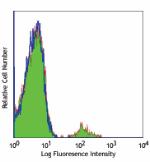
Human peripheral blood lymphocytes stained with DX9 FITC -
PE anti-human CD158e1 (KIR3DL1, NKB1)
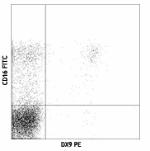
Human peripheral blood lymphocytes stained with DX9 PE and C... -
Alexa Fluor® 700 anti-human CD158e1 (KIR3DL1, NKB1)
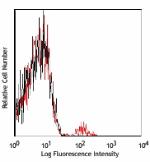
Human peripheral blood lymphocytes stained with DX9 Alexa Fl... -
Brilliant Violet 421™ anti-human CD158e1 (KIR3DL1, NKB1)
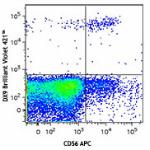
Human peripheral blood lymphocytes were stained with CD56 AP... 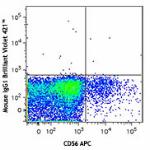
-
PerCP/Cyanine5.5 anti-human CD158e1 (KIR3DL1, NKB1)

Human peripheral blood lymphocytes were stained with CD56 AP... -
PE/Cyanine7 anti-human CD158e1 (KIR3DL1, NKB1)

Human peripheral blood lymphocytes were stained with CD56 FI... -
APC anti-human CD158e1 (KIR3DL1, NKB1)

Human peripheral blood lymphocytes were stained with CD56 PE... 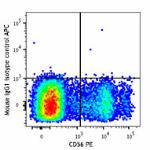
-
APC/Fire™ 750 anti-human CD158e1 (KIR3DL1, NKB1)
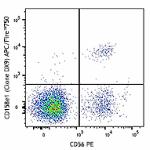
Human peripheral blood lymphocytes were stained with CD56 PE... 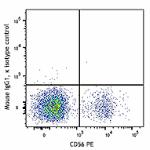
-
TotalSeq™-A0599 anti-human CD158e1 (KIR3DL1, NKB1)
-
TotalSeq™-C0599 anti-human CD158e1 (KIR3DL1, NKB1)
-
TotalSeq™-B0599 anti-human CD158e1 (KIR3DL1, NKB1)
-
Brilliant Violet 650™ anti-human CD158e1 (KIR3DL1, NKB1)

Human peripheral blood cells were surface stained with anti-... -
Brilliant Violet 711™ anti-human CD158e1 (KIR3DL1, NKB1)

Human peripheral blood cells were surface stained with anti-... -
Spark Red™ 718 anti-human CD158e1 (KIR3DL1, NKB1) (Flexi-Fluor™)
-
Brilliant Violet 605™ anti-human CD158e1 (KIR3DL1, NKB1)

Human peripheral blood lymphocytes were stained with anti-hu... -
TotalSeq™-D0559 anti-human CD158e1 (KIR3DL1, NKB1)
 Login / Register
Login / Register 













Follow Us